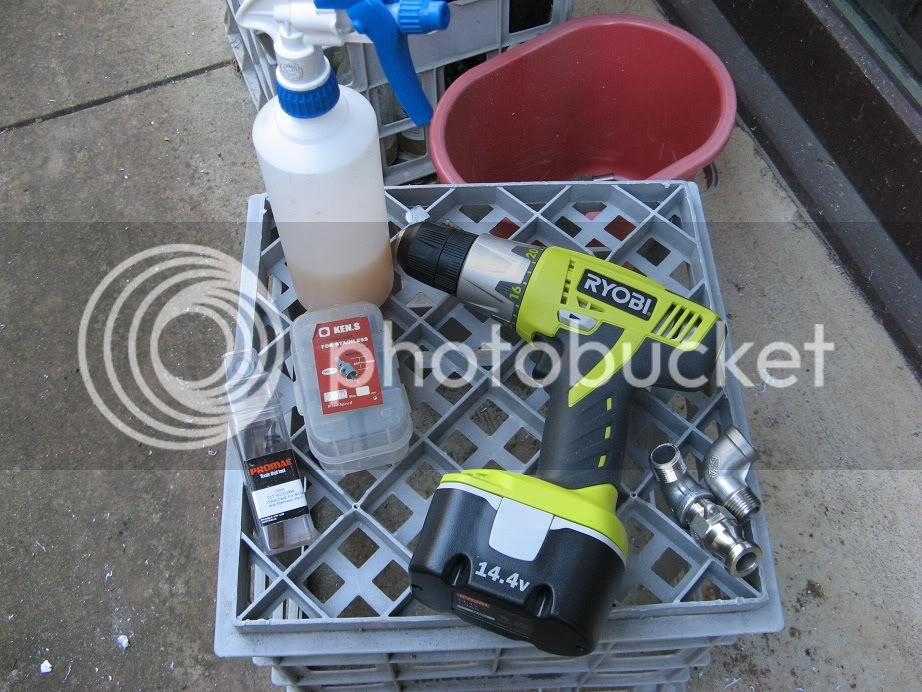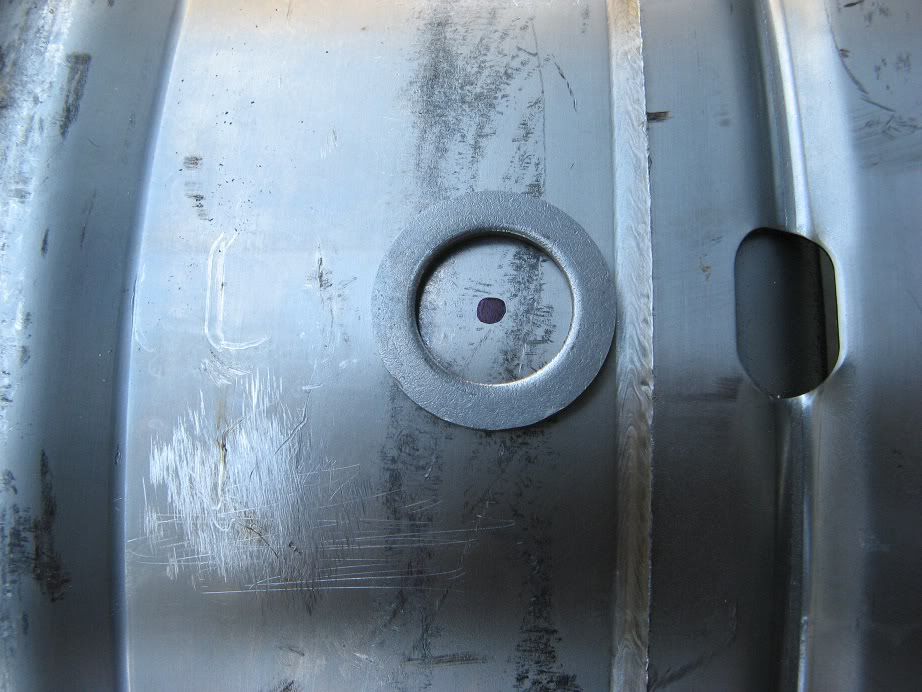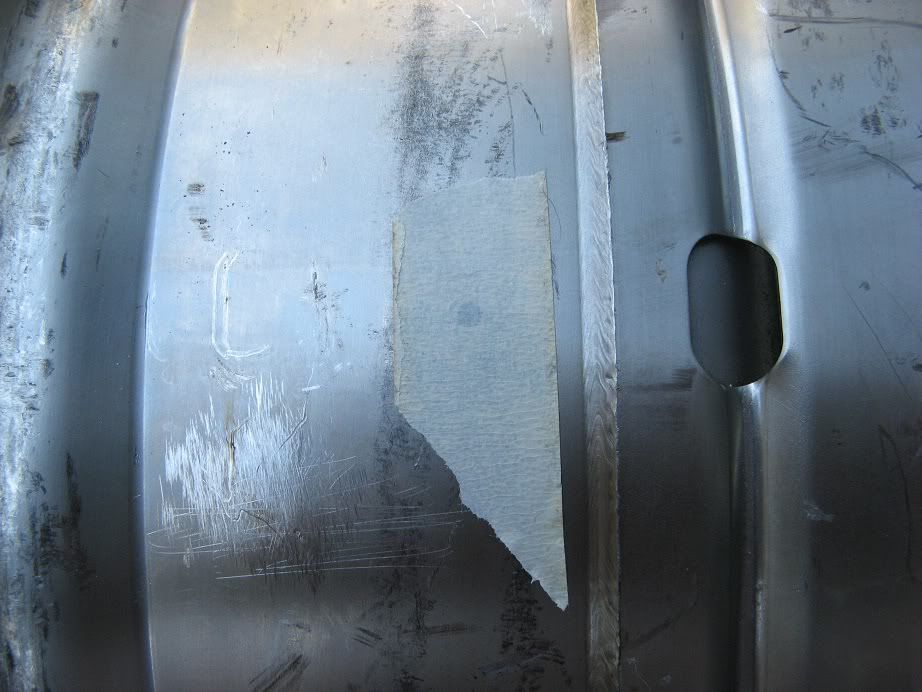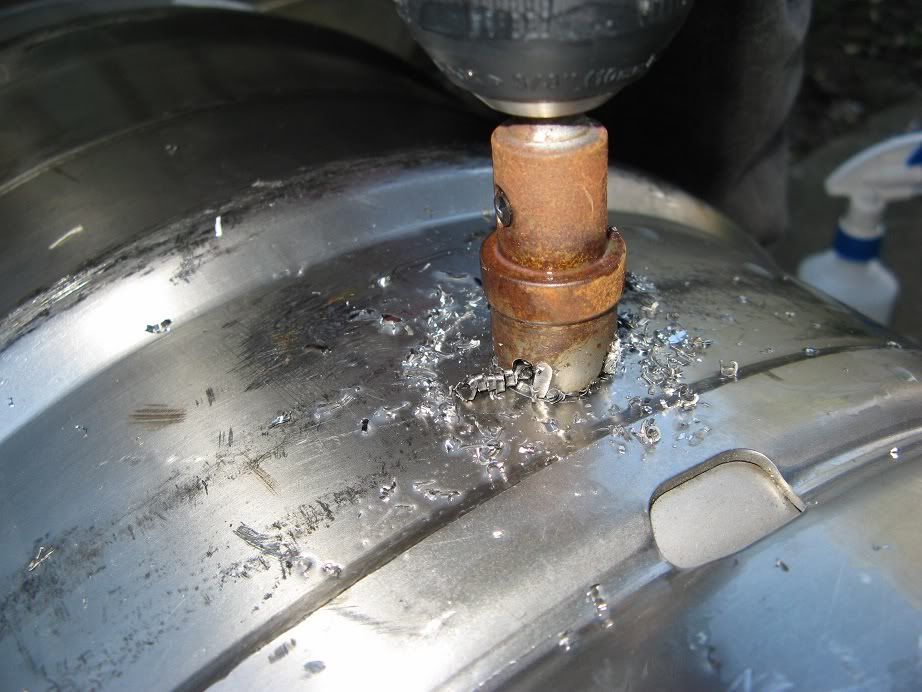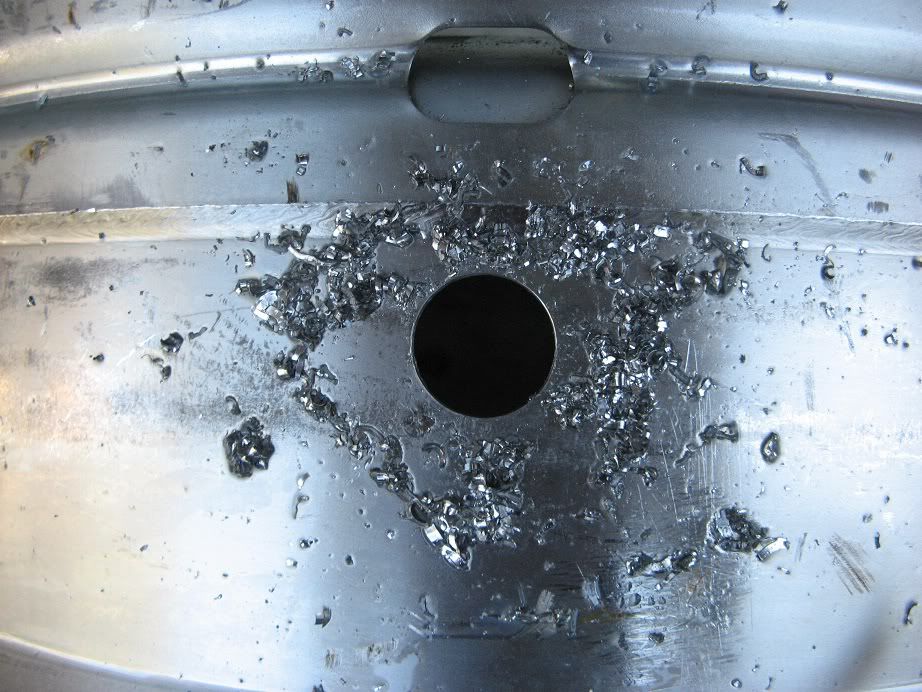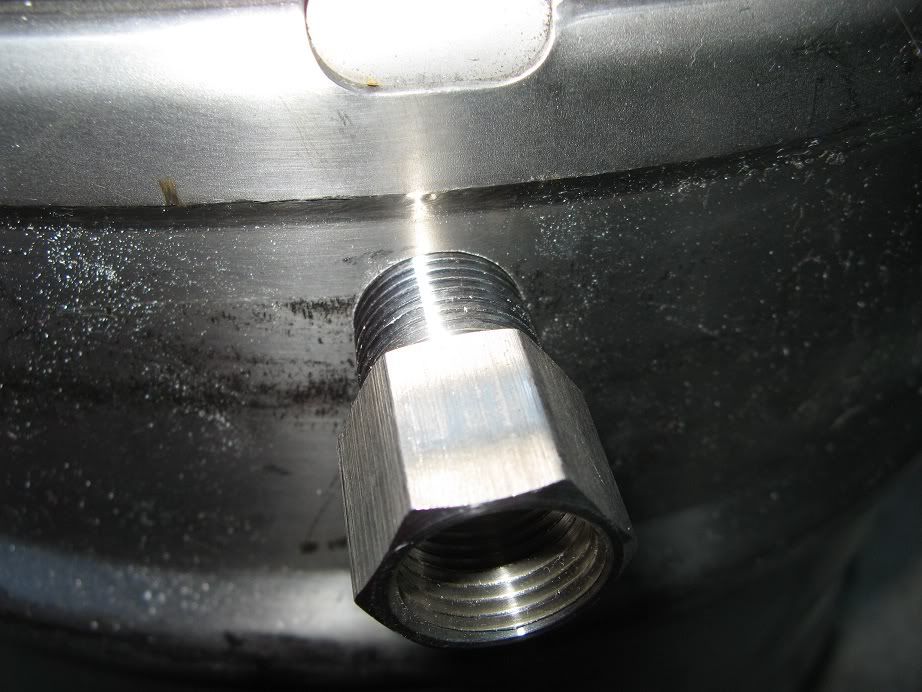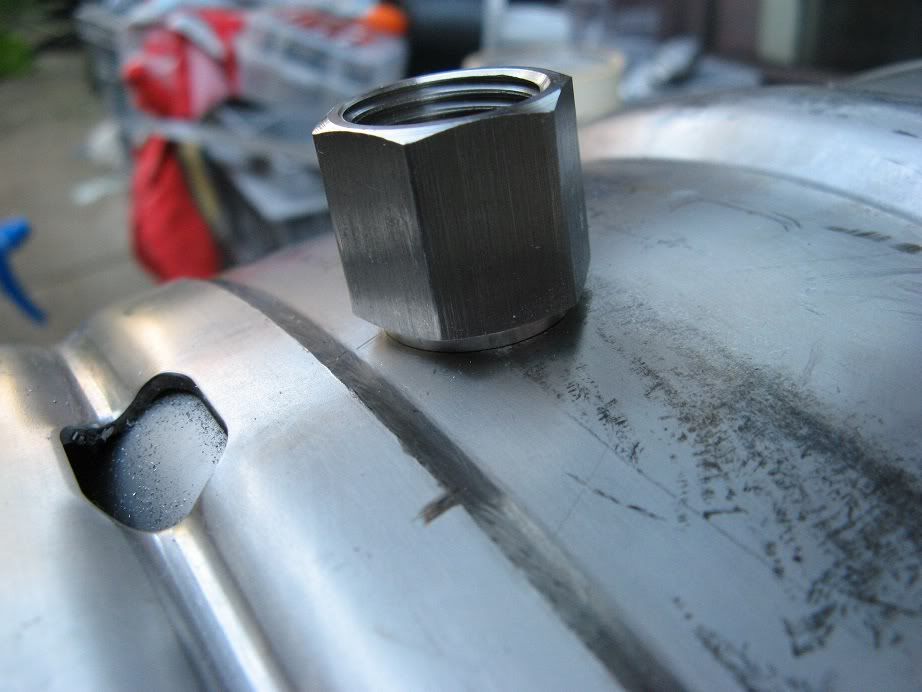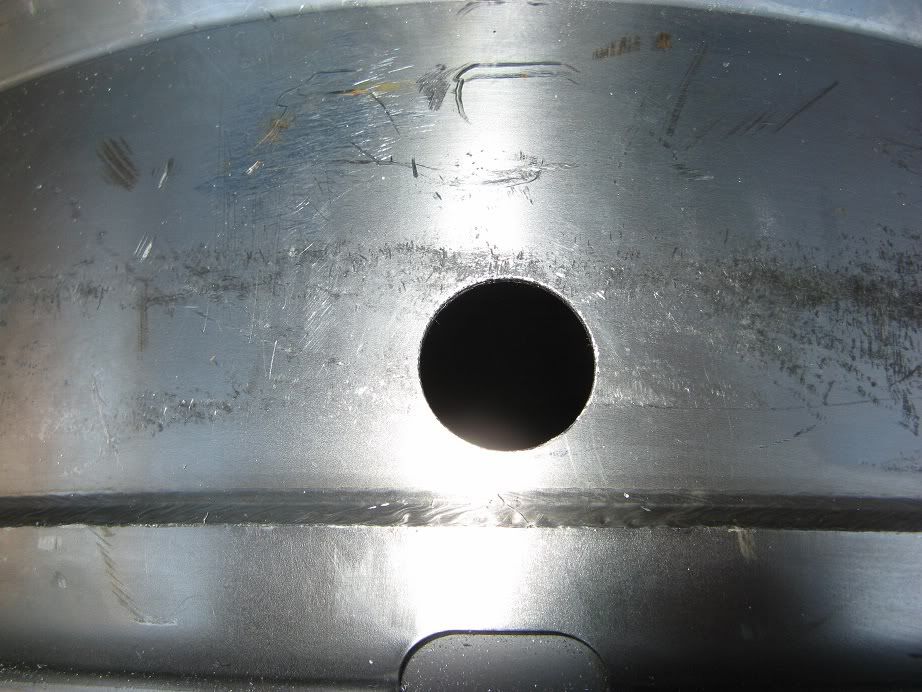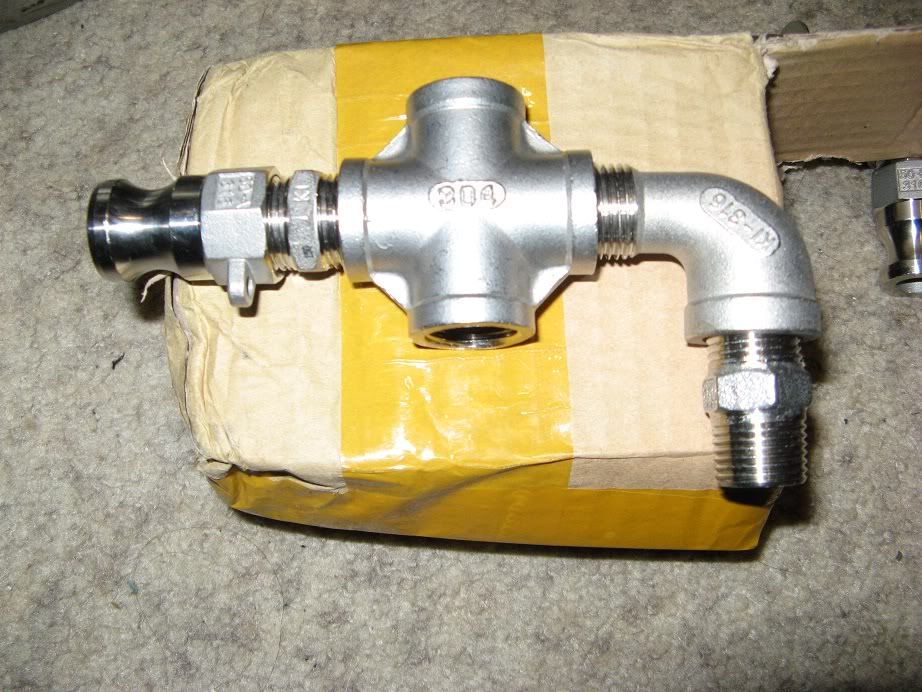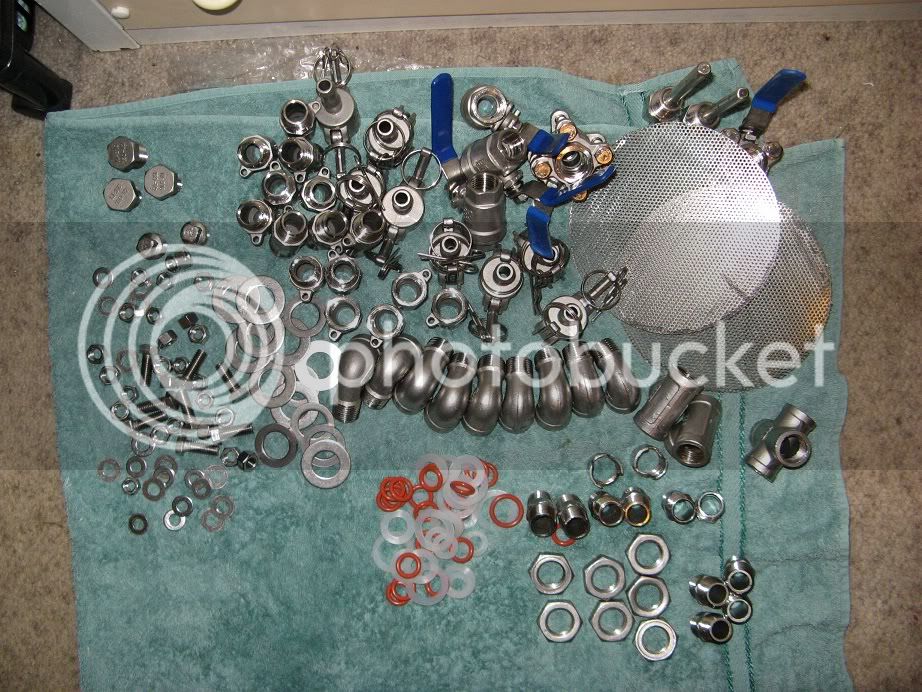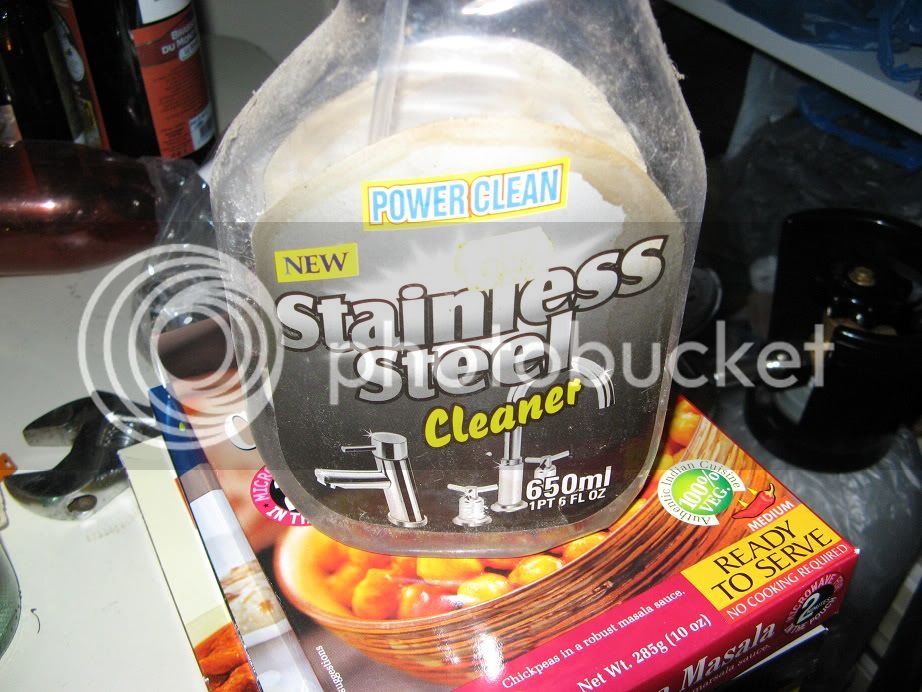#8: Fittings (revisited)
As mentioned in Update #5, most plumbing fittings came from the USA or China, but obviously (other paying usually high shipping costs) it takes at least 2 weeks or longer for stuff to get here. Now that I have the majority of the equipment and fittings (and kegs are getting empty) I want to start brewing, however when I did a mock-fit-out, I was missing a small number of critical fittings and did not want to wait weeks for them to get here. So today I visited a local stainless-fittings supplier and as a result, one of the claims I made earlier turns out to be true, while another is not necessarily so - so I thought I'd better provide an update.
Earlier I said: "
Chinese Ebay fittings (which are probably exactly the same as all the others anyway) averaged out at about 20-40% cheaper". This cost-information was based on telephone or online quotes from 3 local suppliers (
Geordi,
ProChem and
Hoze Joint). Geordi are friendly and helpful, and if you show up at their premises, pay cash, maybe explain you are a home-brewer, they will often give a discounted price - I saved 20% off the phone-quoted price of some stainless pipe for example.
If you telephone ProChem to ask for a price on something as simple as a 1/2 inch stainless nipple, the quote can vary from $20 (in-house manufactured high quality), to $4 (standard quality NPT) to under $2 (cast BSP). But I only understood this after I went into their office/warehouse and essentially said I just wanted the cheapest fittings possible, because home-brewing is not going to put the fittings under pressure or stress, that I didn't care if they are NPT or BSP or if the fittings are 304 or 316 stainless. Once they understood I didn't need high-tech industrial grade fittings, much of their stuff turned out to be cheaper than American or Chinese Ebay prices - and the ProChem fittings are noticeably higher quality and finish than the Ebay ones - obviously they don't deliver to your door for that price, but they are worth talking to if you live close to one of their locations.
Even though I was wrong about Ebay always being cheaper, at least I was not wrong about BSP and NPT fittings being inter-changeable at 1/2 inch size:
From left: American NPT camlock, Australian BSP nipple, Chinese NPT cross, Australian BSP elbow, Chinese NPT nipple.
All these fittings fit snugly and with or without plumbing tape are tight and secure. At 1/2 inch size the only real difference between the NPT and BSP fittings is a difference in thread-pitch, so with some plumbing tape and a little care they all mate together without issue (but I'll make sure I provide an update if I drip boiling wort all over my toes once they are in use).

If you're not yet confused about NTP, BSP, Australian, Chinese or American, the other thing to mention is buying stainless washers - which are required make sure the silicon washers fit tightly and help make the tapered thread fitting bulkheads sit snugly against the side of the kegs. Washer suppliers will deal
only with the internal hole-size (and the external diameter) of the washers, meaning that if you ask for "
1/2 inch washers" or even explain that you want "
washes to fit 1/2 inch plumbing fittings" they'll (try to) give you washers where the internal hole is 1/2 inch wide - and these wont fit onto 1/2 inch plumbing fittings (since the 1/2 inch size refers to the internal size of the fitting not the size outside the thread). I think the guy at the washer-shop said the correct size was 3/4 inch but they seem to measure 13/16 inch (if that's even a real size for washer holes I don't know), the good thing is that if you go to a
dedicated industrial fasteners shop, you'll pay between 5-40cents for washers that will fit 1/2 inch plumbing fittings, but that sell for $1.50-2.00 each and home-brew shops.






